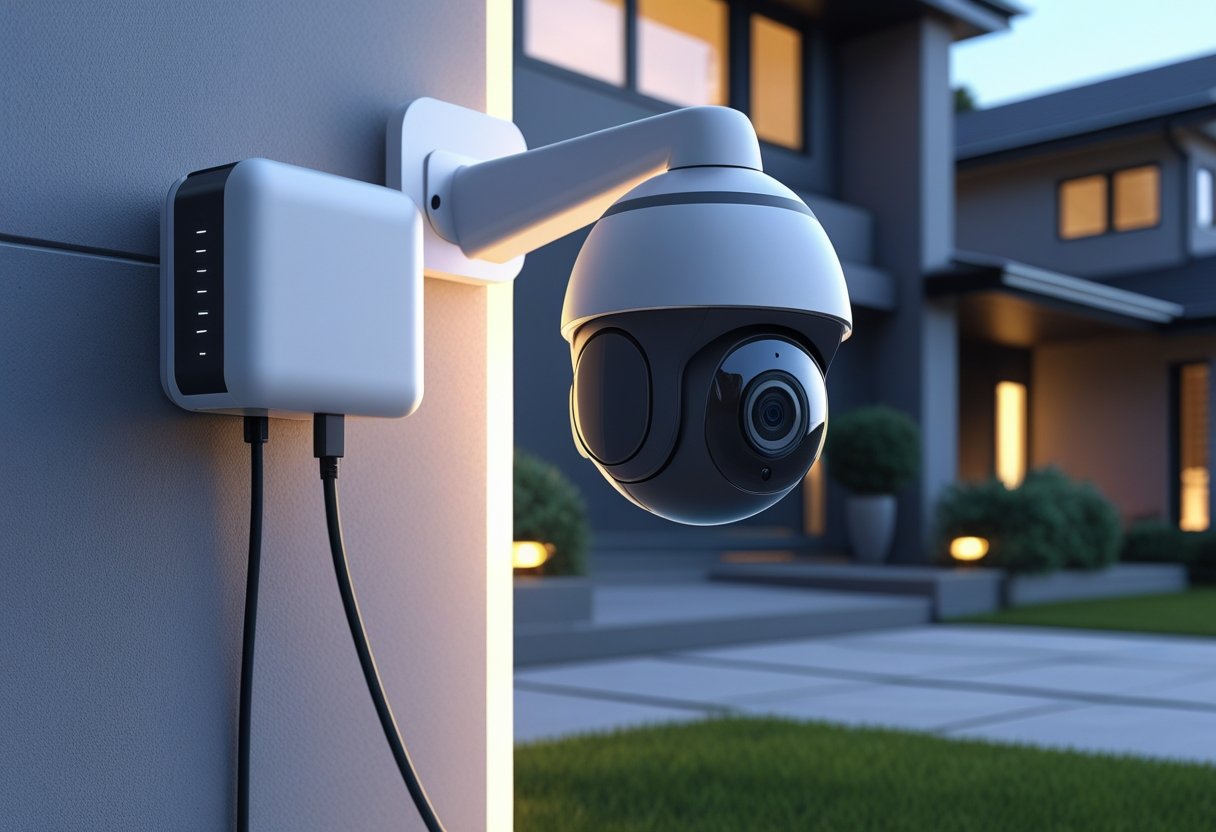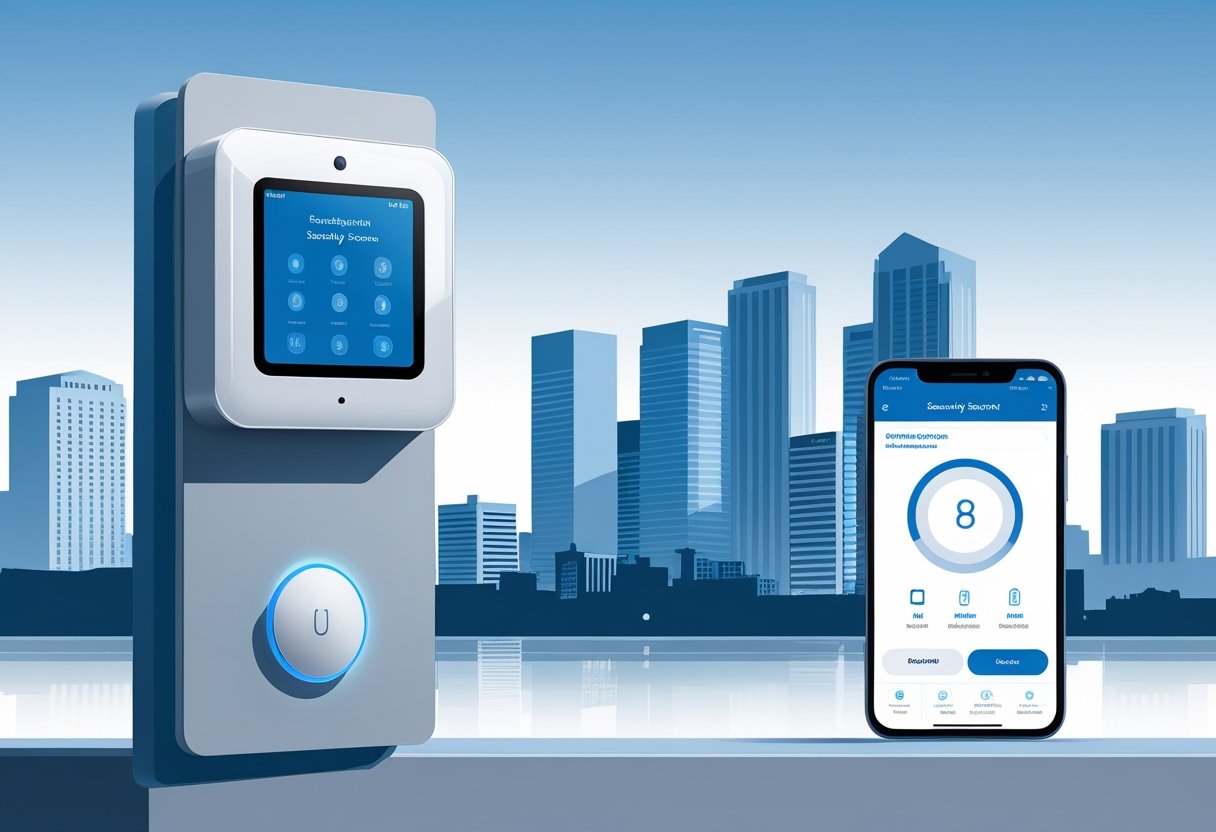When it comes to protecting your home, choosing the right security camera system is essential. Home security cameras with local storage allow you to keep your footage stored privately on-site, minimizing the risk of unauthorized access to your recordings. This option not only enhances your control over your security data but also eliminates ongoing cloud subscription fees.
In the Greater Houston area, residents are increasingly opting for local storage solutions to avoid the vulnerabilities associated with cloud-based systems. These cameras record video directly onto hard drives or SD cards, providing peace of mind that your footage remains secure and accessible to you alone. By exploring the benefits of local storage cameras, you can make an informed choice that meets your security needs.
With various options available, understanding how local storage works and the advantages it offers can help you safeguard your home. Whether you're looking for enhanced privacy, reliable storage, or simply want to avoid additional fees, local storage security cameras can be a wise investment for your home security strategy.
What Is Home Security Camera Local Storage?
Home security camera local storage offers a way to keep your surveillance footage securely on-site, providing more control and privacy. Understanding how local storage functions and its advantages can help you decide on the best solution for your security needs.
Definition and How It Works
Local storage in home security cameras refers to saving video footage directly on a physical device rather than relying on external cloud services. This method typically involves using a microSD card, a Digital Video Recorder (DVR), or a Network Video Recorder (NVR).
When the camera records, footage is written to these devices instead of uploading it online. This means you can access your videos anytime, without needing an internet connection. Local storage enhances security by minimizing potential data breaches associated with cloud storage. You maintain control over your data, mitigating concerns about privacy and external management.
Types of Local Storage: microSD, DVR, NVR, and NAS
There are several options for local storage, each with distinct features:
- MicroSD Card: Ideal for single cameras, it allows limited storage but is easy to install and manage. It typically supports loop recording, where new footage overwrites the oldest data.
- DVR (Digital Video Recorder): Suitable for analog cameras, DVRs allow for multiple camera connections and offer substantial storage capacity. They convert analog signals to digital for easier viewing and management.
- NVR (Network Video Recorder): Used with IP cameras, NVRs offer advanced functionalities, including higher resolution and internet accessibility. They store footage from multiple cameras in one place.
- NAS (Network-Attached Storage): This solution is more complex, designed for extensive camera systems. A NAS system provides centralized data management, allowing multiple users to access the stored footage from different devices.
Comparison: Local Storage vs. Cloud Storage
Both local storage and cloud storage have advantages and limitations:
AspectLocal StorageCloud StorageControlFull control over dataLimited control; relies on third-partyCostNo monthly fees; only initial purchaseSubscription fees can accumulate over timeAccessibilityAccessible without internetRequires internet for accessPrivacyHigh; data stored onsitePotential privacy concernsReliabilityDependable if stored correctlyVulnerable to outages and data breaches
By evaluating these aspects, you can make an informed choice based on your needs, whether you prioritize privacy, dependability, or cost-efficiency in your security camera system.
Benefits and Drawbacks of Local Storage for Home Security Cameras
When considering local storage for your home security cameras, it's essential to weigh the benefits against potential drawbacks. This storage method offers enhanced privacy and control, alongside cost savings, but it also has limitations you should be aware of.
Enhanced Privacy and Data Control
Local storage provides increased privacy since your security camera footage is stored on-site. This means that you maintain complete control over your data without third-party access. Unlike cloud storage, where footage is uploaded to external servers, local storage keeps your recordings within your home environment.
You can access your footage at any time, ensuring it remains private and secure from unauthorized viewers. This is especially important given rising privacy concerns amid data breaches. By opting for local storage, you mitigate the risk of your personal security footage being compromised.
No Monthly Subscription Fees
One significant advantage of using local storage is the absence of monthly subscription fees. With cloud storage services, you'll often face ongoing costs for additional storage and maintenance. Local storage eliminates these recurring expenses, allowing you to invest in a one-time setup.
This is especially beneficial for those on budget constraints while ensuring continuous access to your footage without additional charges. You only incur costs associated with hardware, such as external hard drives or network video recorders, which can be a more affordable long-term solution.
Potential Limitations and Risks
While local storage has its benefits, it also possesses limitations and potential risks. One of the main drawbacks is the risk of hardware failure. If your storage device malfunctions or is damaged, you may lose crucial footage.
Physical theft poses another concern. If someone breaks into your home, they can steal the storage device along with your footage. Additionally, local storage may not easily allow for remote access. Unlike cloud options, you might need to be physically present to retrieve or view the footage.
In summary, while local storage offers privacy and cost benefits, you should carefully evaluate these potential disadvantages to ensure your security needs are met effectively.
Key Features to Look For in Security Cameras with Local Storage
When selecting security cameras with local storage, it's essential to focus on specific features that enhance both functionality and security. Key aspects include video resolution, storage capacity, and detection capabilities, which collectively contribute to the performance and reliability of your surveillance system.
Resolution: 2K, 4K, and Video Quality
The resolution of your security camera directly impacts the clarity of the footage. Cameras with 2K resolution provide a sharp and detailed image, ideal for identifying faces and license plates. 4K resolution takes this a step further, offering four times the detail of 1080p, which is beneficial for expansive areas.
When choosing a camera, consider features like color night vision and low-light performance. Enhanced night vision capabilities ensure you capture clear images even in darkness. A higher resolution means flexibility in zooming without losing detail, making it a crucial aspect of your security setup.
Storage Capacity and Expansion Options
Storage capacity is vital for retaining recorded footage. Look for cameras that offer ample built-in storage or support for external drives. Typically, security cameras with local storage allow for a variety of storage options such as SD cards, ensuring you won't incur additional monthly fees.
Consider models that provide cloud backup options as well; these can serve as a safety net if local storage becomes compromised. Always check the maximum storage limit supported and whether expanding storage is seamless. This way, you can tailor the system to your needs without frequent upgrades.
Motion and Sound Detection Capabilities
Cameras equipped with motion detection offer the advantage of immediate notifications when movement is detected, allowing you to respond swiftly to potential threats. Many systems now include features like person detection, which filters out unnecessary alerts from pets or passing cars.
Alongside motion detection, sound detection adds another layer to your security. This feature enables your camera to recognize unusual sounds, such as breaking glass, prompting alerts directly to your device. Additionally, two-way audio allows for interaction, enhancing security by letting you communicate with anyone in view of the camera, wherever you are.
Popular Home Security Cameras and Systems with Local Storage
When selecting a home security camera with local storage, consider popular models that offer a blend of features, reliability, and ease of use.
Comparing DVR, NVR, and NAS Options
When setting up a local storage solution, you might consider using DVR (Digital Video Recorder), NVR (Network Video Recorder), or NAS (Network-Attached Storage).
- DVR systems traditionally work with analog cameras and use coaxial cables, which may not offer the quality of newer systems.
- NVR solutions are ideal for IP cameras, providing clearer recordings and easier integration with networked devices.
- NAS devices offer a flexible approach to storing and managing video footage, allowing access from various devices on your home network.
Choosing the right recording system depends on your unique needs and the existing infrastructure of your home security system.
Best Practices for Using Local Storage Security Cameras at Home
To ensure your local storage security cameras operate effectively, focus on proper installation, securing your footage, and optimizing storage capacity. These practices will enhance your security system, giving you peace of mind.
Installation Tips and Placement Advice
When installing local storage security cameras, consider optimal placement for maximum coverage. Mount cameras at elevated positions to reduce blind spots and ensure they capture clear images. Aim for a height of 8-10 feet, angled downwards, to cover entry points and high-traffic areas.
Position cameras in well-lit locations to enhance image quality, particularly at night. Use infrared capabilities for low-light situations. Avoid direct sunlight, which may cause glare, and secure cameras with weatherproof housing if they are outdoors.
For connectivity, ensure a stable power source and use reliable mounting hardware to prevent tampering. Regularly check cameras for obstructions and evaluate coverage areas if your needs change.
Securing and Managing Your Footage
It’s essential to implement robust security measures to protect your security camera footage. Start by securing your camera's settings with strong, unique passwords and change them periodically. Utilize encryption options, if available, to safeguard data from unauthorized access.
Regularly back up your footage to an external drive or a separate device. This ensures that you won’t lose critical recordings due to hardware failure. Use a secure method for accessing footage, such as VPNs, especially if remote access is necessary.
Establish a routine for reviewing your footage; doing so will help in identifying unusual activity and keeping your system’s functionality in check. A clear organizational system for stored footage makes retrieval easy during important situations.
Upgrading and Expanding Storage Solutions
Storage capacity is a vital consideration in the effectiveness of local storage security cameras. Assess your recording requirements, such as resolution and frame rate, to determine how much storage you'll need. High-definition footage consumes more space, so balance quality with storage limitations.
Consider using SD cards with higher capacities for individual cameras or invest in a Network Video Recorder (NVR) system for multiple cameras. NVRs generally have larger storage capacities and allow for centralized management of your footage.
Regularly monitor and upgrade your storage solutions based on your evolving needs. Investing in additional storage can prevent data loss and ensure that you have adequate archive time for significant recordings, such as incidents or important events.
Frequently Asked Questions
When considering home security cameras with local storage, you may have specific questions. This section addresses common inquiries regarding the effectiveness, functionality, and advantages of local storage for your security needs.
How does local storage for home security cameras work?
Local storage involves saving video footage directly on devices such as microSD cards or network video recorders (NVRs). This method allows you to access recordings without relying on internet connectivity, ensuring constant availability of your footage.
What are the advantages of using local storage over cloud storage for home security cameras?
Local storage offers greater control over your data, eliminating ongoing subscription fees associated with cloud services. It also enhances privacy, as your footage is stored on-site, reducing the risk of external breaches often linked to online platforms.
Can I access my security camera's locally stored footage remotely?
Yes, many systems allow remote access to locally stored footage, provided the camera connects to a network. You may need specific software or an app to view the recordings from a different location, ensuring you stay informed.
What are the security risks of using local storage in home security cameras?
While local storage offers benefits, it can be vulnerable to physical theft or damage. If your device is compromised, it could lead to loss of footage. Implementing strong passwords and securing devices can mitigate some risks.
How much local storage do I need for my home security camera system?
The amount of storage needed depends on your usage, including the camera's resolution and the length of time you wish to retain recordings. Generally, a larger capacity, such as a 64GB or 128GB card, is recommended for extended coverage without frequent overwriting.
.svg)



.svg)


.svg)



